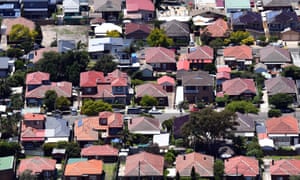Even with falling house prices there is little reason to believe the ALP’s policy is any less popular
With
the clock winding down on the Scott Morrison government, the fear from
the conservative side of politics is becoming rather overwrought. The
articles about what level of destruction the ALP’s policies will wreak
are now virtually a daily occurrence – especially on aspects of economy
dealing with negative gearing and tax. But even with falling house
prices in Sydney there is little reason to believe the policy is less
popular than it was three years ago.
One of my favourite fear articles of late was in the Australian this week, which used data from the Australian National University’s Australian electoral study of the 2016 election to estimate that “while half of all property investors voted for the Coalition at the last federal election, 26 per cent gave their vote to Labor, suggesting the opposition’s proposal to grandfather negative gearing risks putting these voters offside”.
I’m not quite sure why those 26% of investors would now change their
vote due to negative gearing given the ALP went to the 2016 election
with the exact same policy.One of my favourite fear articles of late was in the Australian this week, which used data from the Australian National University’s Australian electoral study of the 2016 election to estimate that “while half of all property investors voted for the Coalition at the last federal election, 26 per cent gave their vote to Labor, suggesting the opposition’s proposal to grandfather negative gearing risks putting these voters offside”.
Apparently 26% of investors who were happy with a policy in 2016 now might decide they dislike it enough to change their vote – even though the changes would be grandfathered and thus would not affect them.
Fear and logic do not make for good bedfellows.
The policy has now been in place for more than three years, so you would expect that voters’ feeling are quite baked into their voting choices.
However given the recent falls in housing prices, we can expect many arguing that the clampdown on negative gearing was good policy in 2016, but is now dangerous because it could send prices down further.
The weakness in the housing market was highlighted by the most recent housing and lending finance data from the Bureau of Statistics.
While October had seen a surprising increase in housing finance commitments, it was, as I had suggested at the time a bit of a statistical flub. In November, housing finance fell 2.8% in seasonally adjusted terms and 1.3% in trend terms:
On this it is worth remembering that the growth of housing finance in the first half of 2016 was also falling. In February 2016 investor finance commitments were 21% below what they had been a year earlier, and overall housing finance was down 8%.
What turned it around was the RBA cutting the cash rate from 2.0% to 1.75% in May that year and then down again to 1.5% in August.
This means that housing finance commitments – especially those of investors – dropping does not really say much about the viability or popularity of a negative gearing policy.
And it is important to remember as well that the real political popularity of restricting negative gearing is about housing affordability, not whether people who own a holiday home on the coast will any longer be able to use it to reduce their taxable income (as the Australian laughably focused on late last year).
Since the last election, other than some small falls in NSW and Victoria and a large fall in Western Australia due to the end of the mining boom, the average owner occupier mortgage has risen consistently.
Before 2016, the average mortgage rate in NSW and Victoria was rising much faster than it is currently. However, in all other states the annual growth of the average mortgage is now growing faster than it was a the last election.
But for a couple in NSW with a male on the average full-time earnings and a women earning 50% of the average full-time rate (which gives them a combined annual income of $131,974), the 45.6 weeks taken to earn a 20% deposit remains well above what it was before the housing boom, let alone the 31 weeks at the turn of the century:
But there is no reason to think the ALP’s negative gearing policy will be any less popular than three years ago. And given that even with the recent falling housing prices it remains as tough or tougher to save for a mortgage in all states than it was three years ago, it may even be more popular.
• Greg Jericho is a Guardian Australia columnist

No comments:
Post a Comment